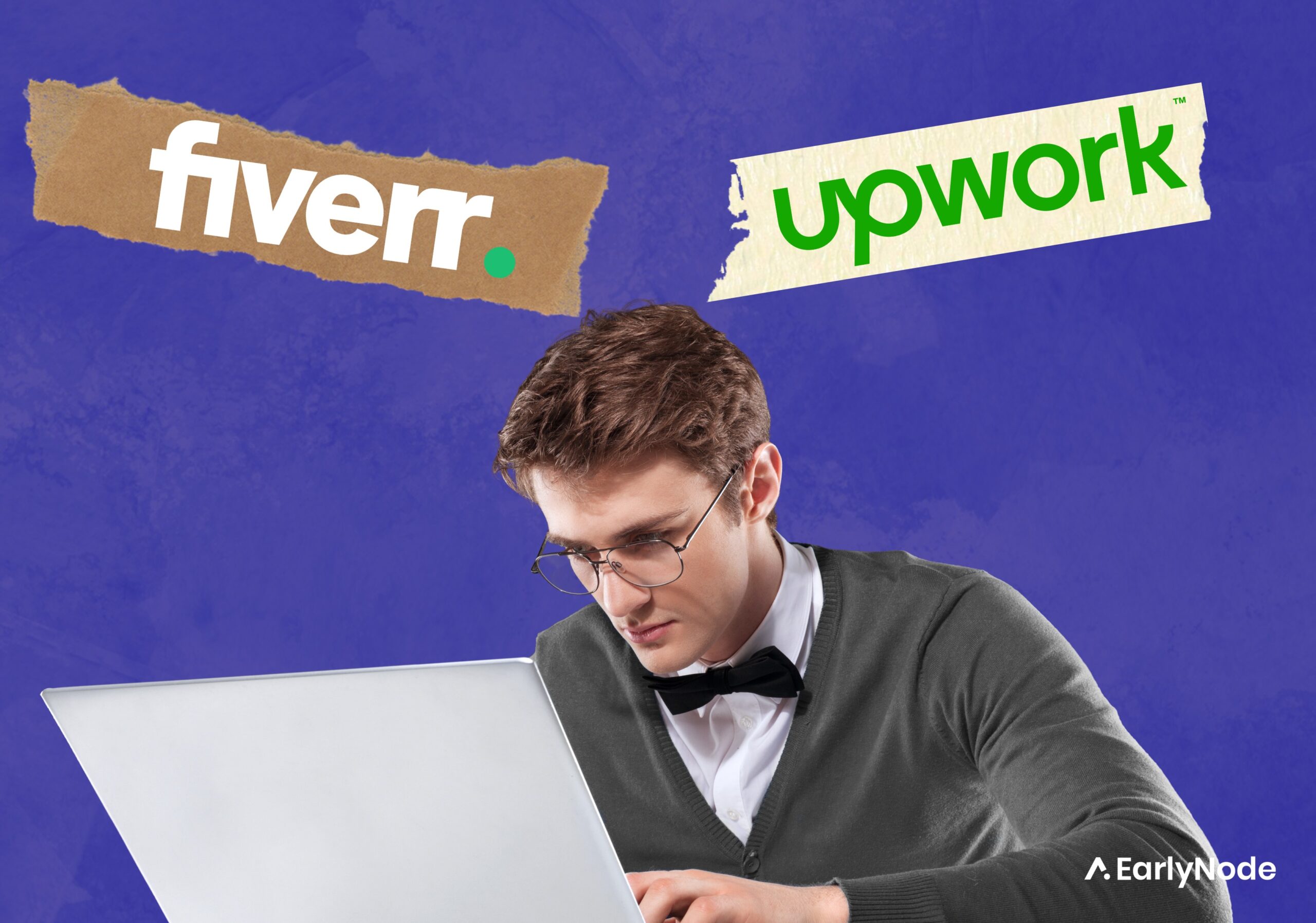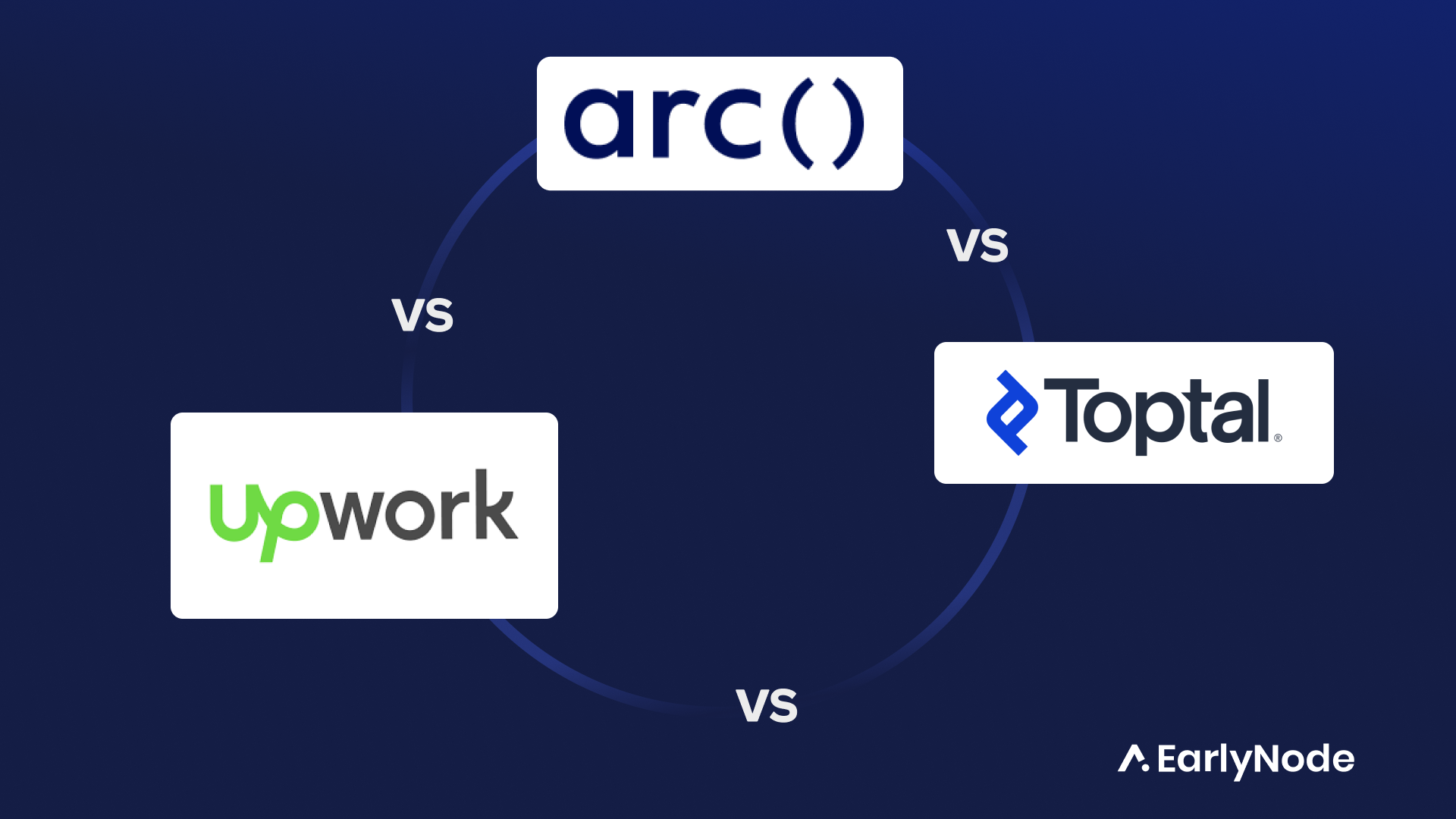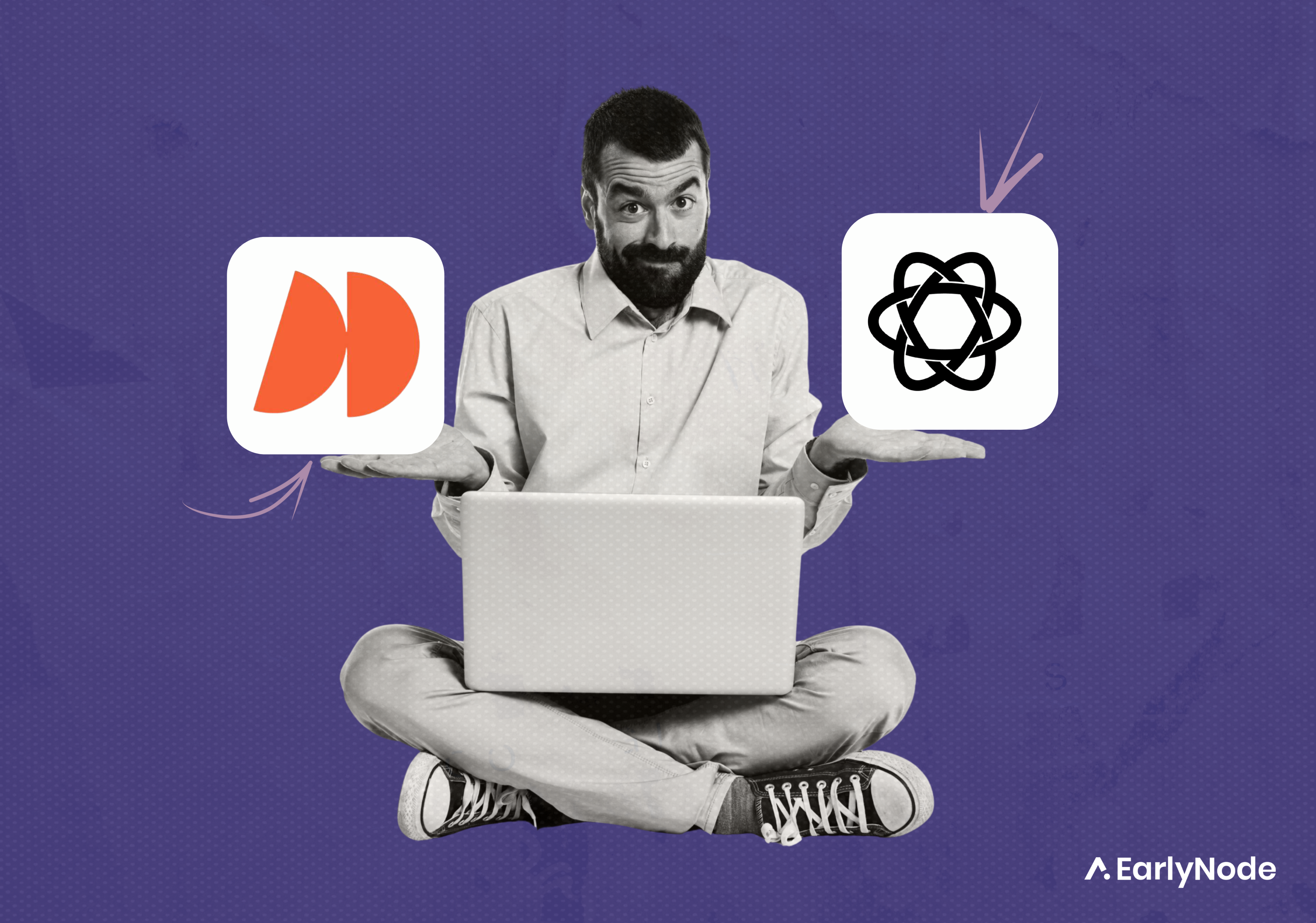Fiverr vs Upwork: Which is Better for Hiring Software Developers

TL;DR
- Fiverr is better for short-term projects and one-time tasks.
- Upwork comes with extra support tools like time-trackers to track the time freelancers spend on a project.
- The vast number of Fiverr gigs sometimes leads to analysis paralysis.
- Both Fiverr and Upwork have extra charges in addition to the freelancer’s rates/price.
- Most clients’ reviews have concerns about the quality of freelancers on Fiverr and Upwork.
If you want to hire software developers, choosing between Fiverr and Upwork can be really confusing. Both platforms have pros and cons, making it hard to decide which one to use. We’ll take a closer look at both platforms, breaking down their differences and helping you figure out which might be better for hiring software developers.
What is Fiverr?
Fiverr is a freelance marketplace platform that allows freelancers, known as sellers, to sell their services, called gigs, to people. Different kinds of gigs exist for different demands, regardless of your budget. This includes software developers offering web and app development services.
Fiverr recently launched a new product called Fiverr Business for bigger companies looking for a more personalized experience. It provides tools that help manage freelancers for smoother collaboration.
Fiverr Pros and Cons
Pros
User-friendly: Fiverr’s UI/UX design interface on both web and its mobile app is beginner-and-user friendly. It’s easy to navigate to what you’re looking for. Just choose a category, then it presents a list of sellers offering the service and their rates.
Cheap: Fiverr markets itself as being able to provide services for as low as $5 (hence the name “Fiverr”). So, if you’re tight on cash you can find freelance software devs to meet your budget.
Multilingual: Fiverr is available in several languages like German, Spanish, French, Portuguese, Italian, and Dutch, making it accessible to a wider range of users beyond just English speakers.
Cons
Analysis Paralysis: This is a major downside of many open freelance platforms. Fiverr is home to over 12 million sellers, including software developers. Fiverr’s vast options for similar services, varying by price, skill, and reviews, overwhelm clients, causing overthinking and indecision, leading to analysis paralysis in choosing the right freelancer.
Quality assurance: Fiverr is liberal—even total newbies with zero experience can join. This makes it difficult to guarantee you’ll find high-quality software developers. You have to dig deep and do your due diligence to find great talent. Even if you did, you would have wasted a lot of time.
Not ideal for long-term projects: Fiverr’s gig system is set up to offer one-off services at a fixed fee. This means that unless you receive a custom offer from a seller, it’s not ideal for long-term projects.
Divided commitment: Fiverr gigs are like goods on the supermarket shelf-you can choose and buy as many as you want. A seller can be working on multiple projects simultaneously, especially if they’re highly rated. Unless you’re ordering the highest package with extras (like super fast delivery), you can’t be certain the seller will prioritize your order.
Limited communication options: You can only chat with a freelancer on the platform. No video calls. This makes it hard to describe your idea properly to the freelancer and can affect the output.
How Fiverr’s Client Process Works
Buying a gig on Fiverr is a straightforward process:
- Sign Up/Log In: If you’re new to Fiverr, create an account. Otherwise, log in to your existing account.
- Search for Gigs: Use the search bar or browse categories to find the service (gig) you need. You can apply filters to narrow down your search based on specific requirements.
- Select a Seller: Review the sellers’ profiles, gig descriptions, portfolio, ratings, and reviews to find the best match for your needs.
- Place Your Order: To proceed, click the “Continue” button on the gig page. Choose any gig extras offered by the seller for additional services or faster delivery.
- Provide Details: After selecting a gig, you’ll be prompted to provide the seller with all the necessary details for the project. Be as clear and detailed as possible to ensure the best outcome.
- Payment: Proceed to payment. Fiverr will hold your payment in escrow until the job is completed to your satisfaction.
- Communicate: Use Fiverr’s messaging system to communicate with the seller if you have additional instructions or need to respond to the seller’s inquiries.
- Review the Delivery: You review the work once the seller delivers the service. If it meets your expectations, accept the delivery. If not, you can request revisions (based on the seller’s revision policy).
- Complete the Order: After accepting the work, leave a review of your experience with the seller. The payment will then be released to the seller.
What is Upwork?
Upwork is a freelance platform similar to Fiverr. It’s designed for clients and freelancers to collaborate on various projects, from short-term tasks to long-term engagements. The platform operates on a job board model, where clients post detailed job descriptions, and freelancers submit tailored proposals. This allows for direct negotiations on scope, timeline, and pricing.
Upwork Pros and Cons
Pros
Flexibility: Upwork has flexible hiring models. Based on their needs, clients can choose to hire freelancers for short-term projects, long-term engagements, or even specific tasks.
Easy to use: Upwork’s platform is designed to be user-friendly. It offers easy job listing posting, straightforward communication tools, and a simple process for reviewing and hiring candidates.
Support tools: Upwork has tools like time trackers to help clients know the exact amount of time freelance developers spend on their projects so they pay only what they deserve.
Cons
English only: Upwork is currently only available in English. If you’re hoping for it to be translated into another language, that option isn’t available at the moment.
Quality assurance: Like Fiverr, the quality of freelancers on Upwork can vary widely. While there are many highly skilled developers, finding the right match requires a deep dive into reviewing profiles, portfolios, and feedback from previous clients.
Communication Challenges: Working with freelancers, especially from different time zones, can sometimes lead to communication delays or difficulties. This can impact project timelines and collaboration.
Slow Hiring Process: While Upwork provides tools to filter and find candidates, the process of reviewing proposals, interviewing candidates, and selecting the right freelancer can be time-consuming.
Multiple Proposal Reviews: Freelancers send you their proposals for the job you posted. Reviewing all the proposals can be time-consuming, especially if the pay is attractive. You can end up checking up to 30 offers, including the freelancers’ portfolios and reviews.
How Upwork’s Client Process Works
Upwork’s process for purchasing services, commonly called “hiring a freelancer” for a project or “buying a gig,” involves several steps designed to connect clients with suitable freelancers efficiently and securely. Here’s a concise step-by-step guide:
Sign Up & Log In: Register for an Upwork account if you haven’t already done so. After registration, log into your account.
Post a Job: Click on the “Post a Job” button. This is where you’ll describe the project you need help with. Include details like the project’s scope, the skills you’re looking for, deadlines, and your budget.
Review Proposals: After you post your job, freelancers will send proposals. Take your time to review these proposals and check the freelancers’ profiles, ratings, work history, and portfolio.
Interview Candidates: Shortlist candidates who are a good fit for your project. You can then interview them via Upwork’s messaging feature or schedule video calls to discuss project specifics and gauge if they’re the right match.
Hire a Freelancer: When you’ve found the right freelancer, make an official hire through the platform. Upwork will guide you through setting up a contract, where you’ll specify the project’s budget, milestones (if applicable), and deadlines.
Fund Escrow: For fixed-price projects, you’ll be prompted to fund the escrow account, which is a way to ensure the freelancer gets paid for their work and you’re satisfied with the job done. For hourly projects, payment will be based on the freelancer’s tracked time and billed weekly.
Begin Project: Work starts once the contract is in place and escrow (for fixed-price projects) is funded. Use Upwork’s workspace to communicate, share files, and collaborate effectively.
Approve Work and Release Payment: For fixed-price contracts, release payment from escrow once you’re satisfied with the work delivered for each milestone or the entire project. For hourly contracts, review and approve the weekly timesheet.
Fiverr vs Upwork: Pricing Compared
Upwork lets clients pay freelancers hourly or a fixed price for the whole project. If you pay by the hour, Upwork has a tool to track freelancers’ time, ensuring you only pay for their time on your project. Most projects pay a rate of $30-120 per hour.
But if you know exactly what you need and want to stick to a budget, you can choose a set price for projects with clear steps and an end goal. A quick browse of Upwork’s website shows the average fixed fee for software projects to be around $2700.
Upwork has additional fixed fees for Clients. You can find the summary of these fees on Upwork’s website. Screenshot below:
Fiverr, on the other hand, allows freelancers to set their service rates, offering both buyers and freelancers flexibility.
Software development gigs on Fiverr can cost as little as $5 and as high as $2000, though the average rate is around $45 per hour. Gigs
But like Upwork, Fiverr also charges service fees equal to 5.5% of the gig price. You’ll pay an extra $2.50 fee for gigs under $75.
Fiverr vs Upwork: Developer Reviews by Customers
Let’s dive in to see what customers thought about the quality of developers they hired on these two platforms:
Fiverr
Fiver has 3.5 and 4.3-star ratings on Trustpilot and G2, respectively. Although some ratings were by freelancers, we focused on those by clients.
Clients agreed to the platform’s ease of use. Their major issue was the quality of freelancers. Some even believed they were scammed because of the poor work they received. Payment was the next biggest concern.
Upwork
Upwork is rated 4.6 stars on G2. The most positive reviews were about the wide talent pool and customer support. Once again, the negative feedback mostly concerned unreliable freelancers.
Which is Better Value For Money When Hiring Software Developers?
While both platforms have their merits, the decision often depends on the project’s specific needs. Fiverr is cheaper and good for smaller tasks. Upwork is better for more complex projects. It allows for detailed project proposals and supports flexible payment options. Upwork costs a bit more but gives you better control and quality for your money. If your project needs more attention to detail, Upwork is usually the better choice.
Best Alternative to Fiverr and Upwork
If you’re a SaaS startup looking to hire freelance developers, we recommend ReactSquad. Here’s how the three platforms compare:
Why We Recommend ReactSquad
- Unlike other alternatives, ReactSquad is fully focused on one specific tech stack (React & Node.js). Their developers have high expertise and a niche focus on SaaS products.
- Reactsquad has a rigorous vetting process for their developers; with 4 interview rounds and 4 weeks working on a paid test project.
- Senior developers with 5+ years experience.
- Startup-friendly rates (starting from $75/hr).
- 7-day free trial with your matched developer and a replacement guarantee at any point during your project.
- You can hire React devs for short and long-term SaaS projects and pay on a month-to-month basis.
Visit ReactSquad’s website to get matched with the best React developers for your SaaS startup.




